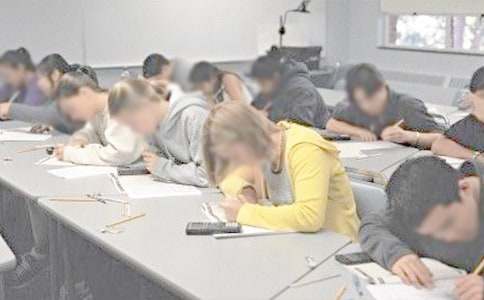- 相关推荐
全国大学六级考试翻译特训试题
One good turn deserves another.以下是小编为大家搜索整理的全国大学六级考试翻译特训试题,希望能给大家带来帮助!更多精彩内容请及时关注我们应届毕业生考试网!

part 1
2017年12月英语六级翻译预测:颐和园
请将下面这段话翻译成英文:
颐和园(the Summer Palace)被认为是中国古典园林最好的例证(paradigm)。它荟萃南北园林之精华,将人造景观与大自然和谐地融为一体。颐和园是中国目前保存最完整、规模最宏大的古代园林,是中国园林艺术的巅峰之作。这座利用昆明湖、万寿山(Longevity Hill)为基址,以杭州西湖风景为蓝本,汲取江南园林的设计手法和意境而成的大型天然山水园,被誉为皇家园林博物馆。颐和园于1924年才正式对公众开放,深受国内外游客的喜爱。
参考翻译:
The Summer Palace is considered to be theparadigm of the classical Chinese garden.It is agalaxy of the essence of classical Chinese gardensin the north and the south and integrates artificiallandscapes with nature in perfect harmony.TheSummer Palace is China's best-preserved and largest ancient garden up to date and isconsidered to represent the peak of Chinese garden art.This large natural landscape garden,known as the Royal Garden Museum, was based on Kunming Lake and Longevity Hill, using theblueprint for the West Lake in Hangzhou and absorbing the techniques and artisticconception used in Jiangnan garden design. The Summer Palace was opened to the public in1924 and is now deeply loved by visitors both home and abroad.
1.中国古典园林最好的例证:可译为the paradigm of theclassical Chinese garden。其中paradigm意为“范例,模范”。
2.荟萃南北园林之精华:“莶萃”即“融合,混合”,可译为词组ablend of或gather together。文中译为a galaxy of,其中galaxy意为“一群,一批”。“南北园林”即 “南方和北方的园林”,可译为classical Chinese gardens in the north andthe south;“精华”可用 essence表达。
3.保存最完整:可译为best-preserved。
4.是中国园林艺术的巅峰之作:即"代表了中国园林艺术的高度”,译为represent the peak of Chinesegarden art。
5.以…为基址:即“建立在…基础之上”,故译为be based on。
6.以...为蓝本:可译为use the blueprint for。
7.汲取江南园林的设计手法和意境:其中“汲取”译为absorb; “设计手法”就是 指“工艺,技巧”,译为technique; “意境”译为artistic conception。
8.被誉为:可译为be known as或用be honored as表达。
9.皇家园休博物馆:可译为the Royal Garden Museum。
part 2
2017年12月英语六级翻译预测:紫禁城
请将下面这段话翻译成英文:
紫禁城(the Forbidden City)坐落于北京市中心,又称故宫,是明清时期的皇宮。这座矩形宫殿是世界上最大的宫殿群。四周环绕着六米深的护城河(moat)和十米高的城墙。四面各有一门。护城墙四角各有一个精心建造的独特角楼。紫禁城被分成两部分:南面的部分即外朝(Outer Court),是皇帝行使最髙权力的地方;而北面的部分即内廷(Inner Court),是皇帝和皇室成员生活的地方。今天,紫禁城敞开大门,迎接国内外游客。
参考翻译:
Located at the center of Beijing, the Forbidden City,also called gu gong in Chinese, was the imperialpalace during the Ming and Qing Dynasties. In theshape of rectangle, it is the largest palace complexon earth. It is surrounded by a six-meter-deep moatand ten-meter-high city walls. There is a gate on each side of the walls, and on each of the fourcomers there is a unique and delicately structured tower. The Forbidden City is divided intotwo parts. The southern part, or the Outer Court, was where the emperor exercised hissupreme power over the nation. While the northern part, or the Inner Court, was where theemperor and his family lived. Nowaday, the Forbidden City is open to welcome tourists fromhome and abroad.
1.紫禁城:即the Forbidden City。
2.宫殿群:可译为palace complex。complex为“建筑群”之意。
3.精心建造的独特角楼:可译为a unique and delicatelystructured tower。
4.被分成两部分:可译为be divided into two parts。
5.皇帝行使最高权力的地方:可译为定语从句where theemperor excercised his supreme power over the nation。其中“最高权力”译为supreme power。
6.国内外:可译为home and abroad。
【全国大学六级考试翻译特训试题】相关文章:
全国英语六级考试阅读理解特训试题07-15
全国英语专八考试翻译特训题07-18
全国英语四级考试翻译特训题05-10
全国英语六级考试词汇辅导特训题06-06
大学英语六级听力备考特训试题05-02
大学英语六级考试翻译试题特别训练05-29
大学英语六级翻译备考试题08-02
英语六级考试翻译特训练习题03-09
全国英语等级考试二级对话特训试题08-16